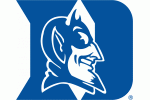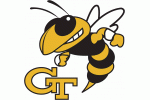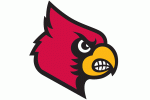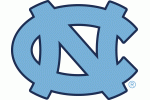It has been a very frustrating season so far for the Orange and their fans, and to add salt to the wound, things wouldn't be so bad if they played better at the end of close games.
 As I was trying to refrain from picking up my television and throwing it across the room when Syracuse lost in overtime to Clemson on Tuesday, I couldn't help but realize that my feelings seemed to be similar to ones I have had during previous games this season.
As I was trying to refrain from picking up my television and throwing it across the room when Syracuse lost in overtime to Clemson on Tuesday, I couldn't help but realize that my feelings seemed to be similar to ones I have had during previous games this season.
This was a game the Orange had a very good chance to win, but they basically gave the Tigers another chance by letting the game go into the extra period and the visitors took advantage. As I tried to wrap my head around how this happened, I was quickly reminded of the first two ACC games that the Orange also put themselves in a position to win but failed to do so.
The Clemson game marked the sixth game of the season where the Orange and their opponent were tied or within five points of one another heading into the last five minutes of regulation (the other five being against Connecticut, Texas A&M, Wisconsin, Pittsburgh and Miami). After winning the first two of these close games in the Bahamas, the Orange lost the next four, including two overtime games. The only team they actually managed to outscore in these clutch-time moments were the Aggies. The Orange's opponents have combined to outscore them 91-61 in those last five minutes and overtime.
Here's how the numbers correlate look:
| Syracuse | Opponents | |
| FG/FGA | 14/50 | 25/49 |
| 3FG/3FGA | 8/26 | 6/15 |
| FT/FTA | 25/38 | 35/36 |
| Rebounds | 22 | 42 |
| Assist/Turnover | 6/15 |
15/13 |
In games where the Orange put themselves in position to win, they have managed to take themselves out of it on both ends of the floor. While they shoot over 14 percent worse in these situations as compared to the rest of their attempts on the season, their opponents become red hot and their field goal percentage increases by more than 12 percent.
It is safe to say that these shooting numbers for the Orange are pretty shocking. Despite their inconsistencies, they do have a few players who do not lack confidence in shooting the ball and have proven they can knock down tough shots. Michael Gbinije, Trevor Cooney and Malachi Richardson, who take 65 percent of the team's shots, are three guys who the Orange choose to rely on heavily in these situations. Unfortunately, they have not risen to the occasion. The trio has combined to have taken 41 of those 50 shots and they have only made 10 of them. While some of this may be credited to fatigue as they rarely spend time on the bench, it would be hard to argue that is the main and only reason for these shooting woes. As the Orange look to them more frequently in close games, they see their production drop dramatically as the tensions rise.
The rebounding numbers look terrible, but may not come as much of a surprise since the Orange have struggled in that department. However, arguably the most astonishing numbers come at the free throw line. Opponents have shot a hard-to-believe 97.2 percent, while the Orange continue to miss free throws at a similarly-dreadful rate they have all season. Their opponents' veins are made of ice, while the Orange prove the popular notion that they consist of pulp when the pressure's on.
With so much going wrong at the end of games that they very well could win, what exactly can they do to improve? For starters, they can stop leaving points at the free throw line, which may be difficult for this group the way things are going. In some of these games, like Tuesday, one or two made free throws would not make the percentage significantly better, but those couple extra points could be enough to earn a victory. Rebounding is a 40-minute problem, so hopefully they can find ways to limit their opponents' extra opportunities at all times.
As far as the shooting, less pressure on Gbinije, Cooney and Richardson to produce over the course of the game may help, but with the lack of depth on this team it is hard to believe that more rest will be allocated to them. These guys are not afraid to pull the trigger, but others like Tyler Lydon and Tyler Roberson might be a little gun-shy when they could be a big help if they looked to score more frequently. These two are reluctant to shoot over the course of games and the end is no different, as they combine for just six of those 50 attempts. Lydon, however, has made three of his five clutch-time attempts, so if he can find a way to get more involved throughout the game, he could end up being a go-to guy in late game situations as well, helping take some of the pressure off of his teammates.
Whether or not the Orange try some new strategies in these end of game scenarios will remain to be seen, but if they want any chance of dancing in March, something has to change, and very fast.



















